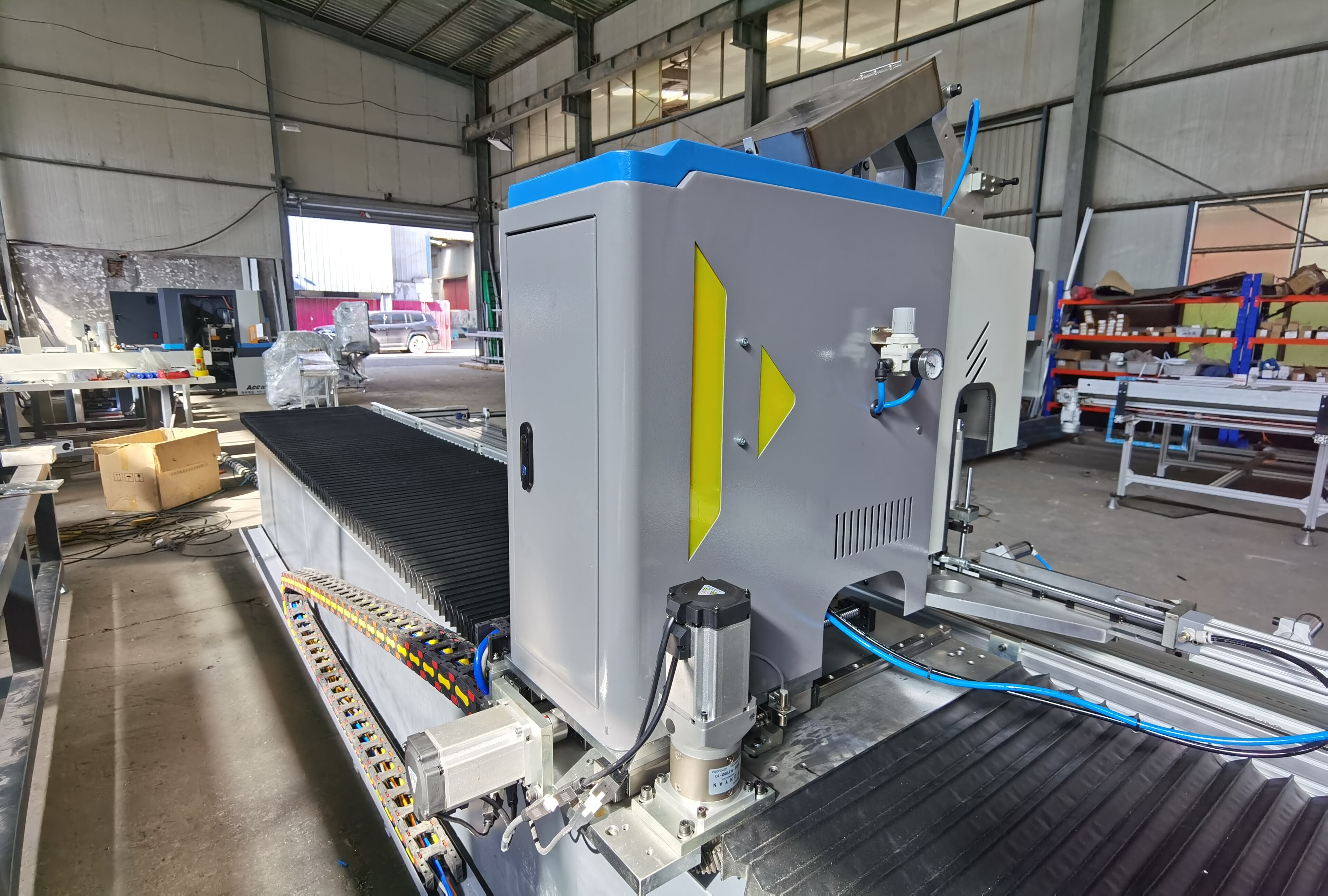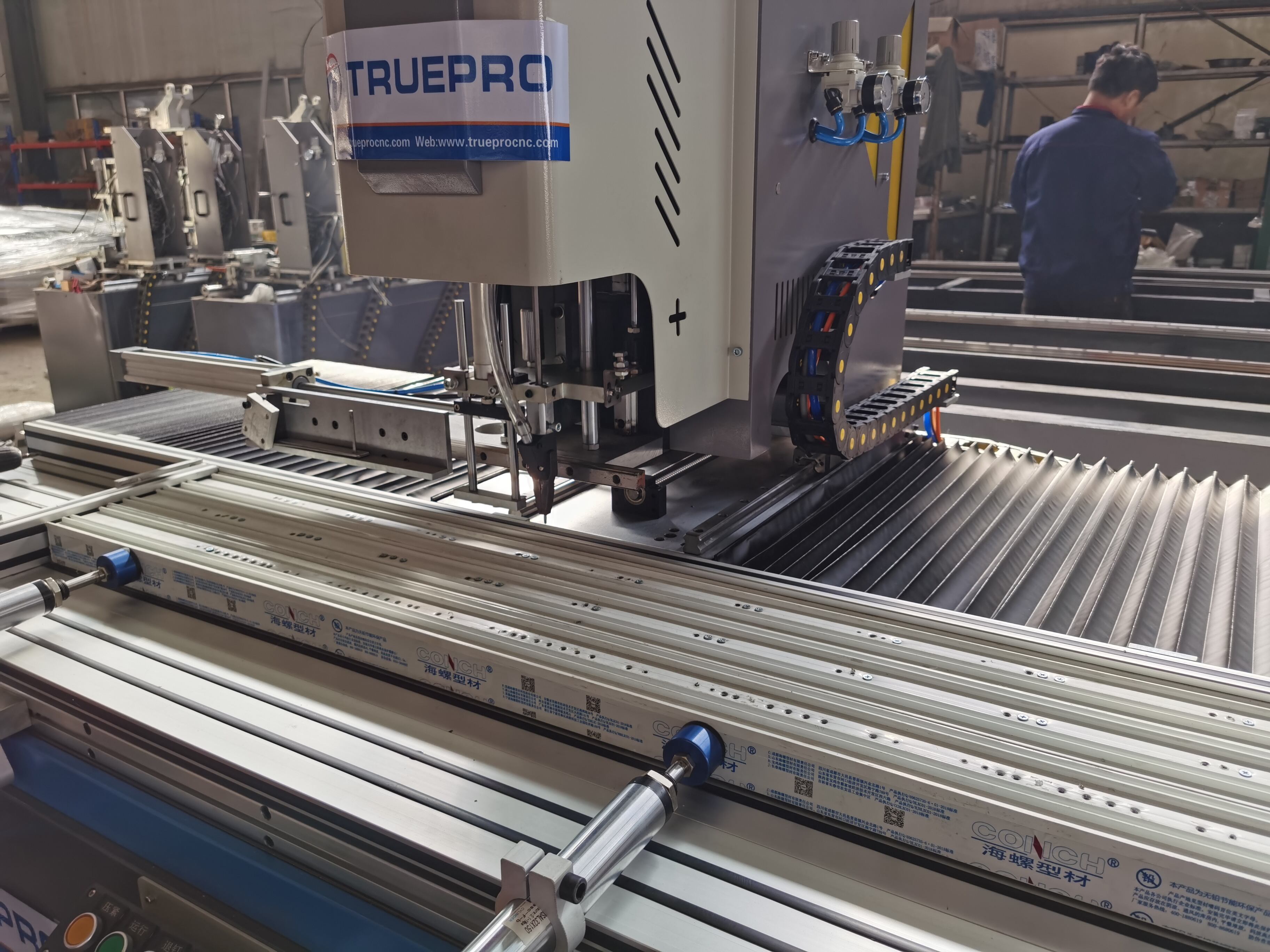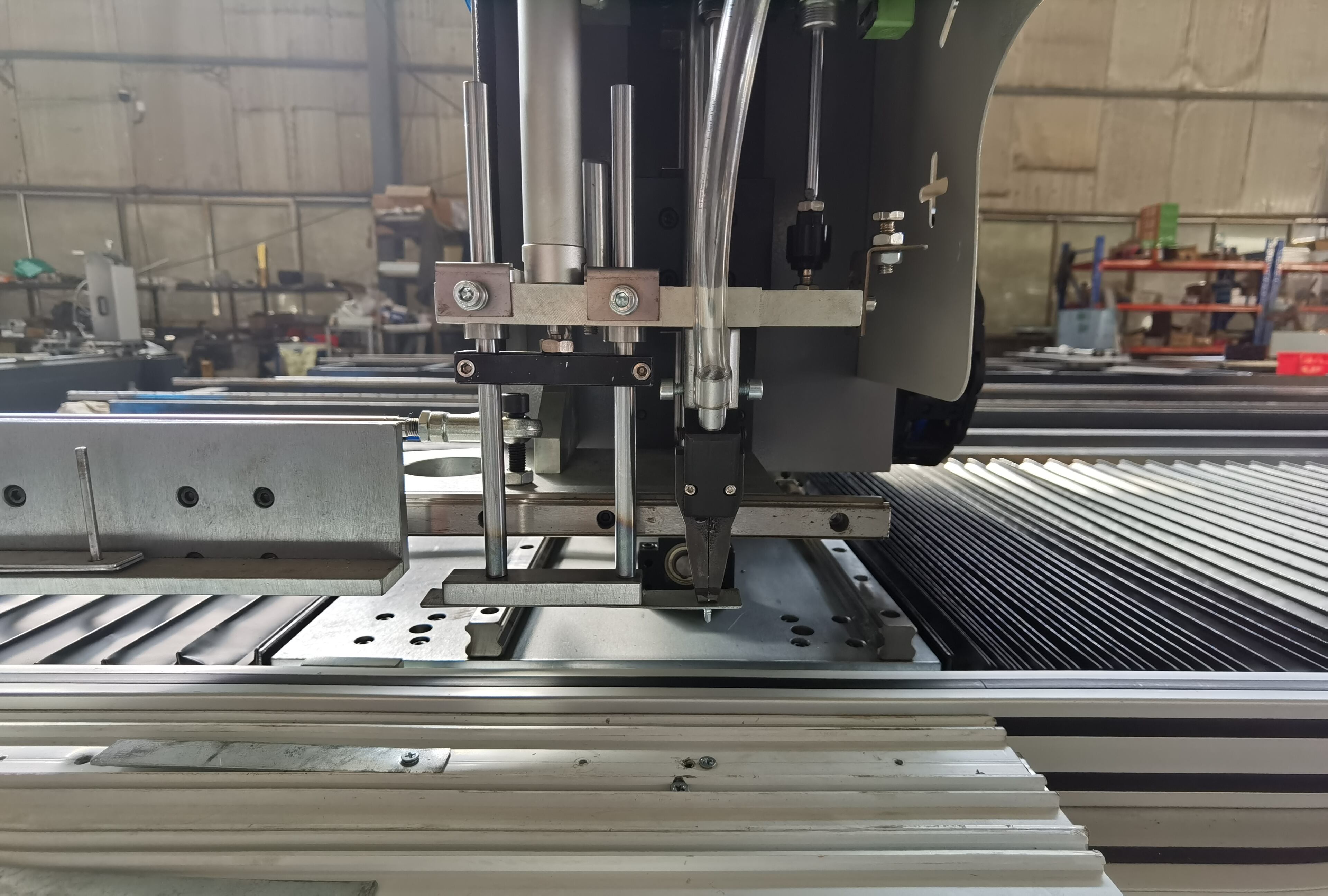How Automatic Clamping Enhances Screw Fastening in Window Assembly
The Role of Integrated Clamping in Modern Window Manufacturing
Window manufacturing requires a high degree of accuracy, particularly when it comes to attaching screws properly. New clamping technology has changed the game by holding profile pieces steady without needing constant manual adjustments that often cause misalignment issues. Data from recent industry reports shows just how critical proper fastening really is: faulty installation can lead to nearly half more defects in assembled products while also slowing down production cycles by almost a third. What makes these systems so valuable is their ability to adjust themselves based on what material they're working with. For instance, they handle PVC materials ranging between 2 to 5 millimeters thick and aluminum sections typically 1 to 3 millimeters thick. This self-adjusting feature ensures even pressure application throughout the process, resulting in consistently deep screw holes and better thread connections regardless of component differences.
Precision and Consistency: How Automatic Clamping Improves Fastening Accuracy
The automatic clamping system stops screws from being driven too far into mixed material parts thanks to spring loaded components that adjust on the fly for about 1.5mm differences in thickness. When paired with torque controlled screwdrivers, it maintains around 2% consistency across fastenings. Looking at field reports from a recent industrial assembly project back in 2024, there was actually a noticeable drop of roughly 19% in those annoying cross threading problems once they started using programmable clamps to guide where screws go. What makes this whole setup work so well is how it keeps pilot holes properly aligned without warping the materials too much something that happens all too often during manual assembly processes.

Industry Trend: Rising Adoption of All-in-One Fastening and Clamping Systems
The market for integrated screw fastening machines with clamping capabilities grew 28% YoY between 2023 and 2024, driven by measurable gains in efficiency and quality:
- 60% reduction in cycle time variance compared to standalone systems
- 3.5:1 ROI within 18 months for medium-volume producers (5,000–15,000 units/month)
- 90%+ first-pass yield rates across 12 leading European manufacturers
This trend reflects growing demand for error-proof processes as window designs become more complex, with multi-chamber profiles now used in 73% of premium installations.
Assessing Production Needs: Is Automatic Clamping Right for Your Output Volume?
Automatic clamping becomes cost-effective at approximately 3,200 units per month:
| Production Tier | Manual Clamping | Automatic Clamping |
|---|---|---|
| Cycle Time/Window Frame | 18–22s | 12–14s |
| Operator Oversight | 100% | 30% |
| Energy Consumption | 0.8kWh | 1.1kWh |
For facilities producing over 8,000 units monthly, the 11% higher energy use is outweighed by 37% labor savings. However, small-batch producers (<1,000 units/month) often benefit more from flexible manual systems.
Key Features of Screw Fastening Machines with Programmable Clamping Force
Seamless Integration of Feeding, Fastening, and Clamping Processes
Today's screw fastening machines work their magic by syncing up feeding, fastening, and clamping all through those PLCs we hear so much about in manufacturing circles. No more moving parts around manually from station to station. When everything works together like this, factories actually cut down their cycle times somewhere around 35% compared to when each step happens separately according to that Industry Automation Report from last year. The software running these systems can tweak things on the fly such as how deep screws go into materials or how tight they clamp down, keeping positions accurate within about half a millimeter throughout entire production runs. Take automotive assembly lines for instance where these integrated systems really shine. By aligning profiles while installing fasteners at the same time, manufacturers see roughly two thirds fewer handling mistakes during mass production runs.
Adjustable Torque and Clamping Force for PVC and Aluminum Profiles
Advanced machines offer torque ranges from 10–60Nm in 0.5Nm increments, enabling precise control across materials—from soft PVC (1.4g/cm³) to hardened aluminum alloys. Operators can store over 50 preset configurations tailored to specific applications:
- 15–20Nm for thin-wall PVC profiles
- 35–45Nm for aluminum thermal breaks
- Automatic force adjustment when detecting thickness deviations >±0.5mm
Recent field tests show adjustable systems reduce material deformation by 28% compared to fixed-pressure tools (Materials Processing Quarterly 2023).
Proven Results: 40% Reduction in Misalignment Errors with Programmable Systems
Manufacturers using programmable clamping report significant quality improvements. A 12-month study of European producers found:
| Metric | Manual Systems | Automated Systems | Improvement |
|---|---|---|---|
| Profile alignment errors | 8.2% | 4.9% | 40.2% |
| Rejected assemblies | 5.1% | 2.3% | 54.9% |
These results confirm that programmable systems maintain sub-0.3mm joint tolerances even at output rates exceeding 450 units/hour.
Top Automated Screw Fastening Systems for High-Efficiency Window Frame Production
From Manual to Automated: The Shift in Window Fastening Technology
Factories across the board are swapping out those old hand screwdrivers for machines that can drive anywhere from 30 to 80 screws every single minute with pinpoint accuracy down to 0.1mm. Take the SFM-01 machine for instance it handles two PVC profiles at once and installs all the necessary reinforcements too something that used to take three different people working separately. The numbers speak for themselves really. Companies report around a 40 drop in labor expenses after making this switch, plus fewer workers end up with those annoying repetitive strain injuries. Some recent research from European plants in 2023 backs this up pretty solidly too.
Robotic Integration: Synchronizing Screw Fastening with Automated Clamping
Top-tier systems integrate 6-axis robots with force-feedback clamping that applies 0.6–0.8 MPa pressure to prevent deformation during fastening. The coordination between automated screw feeding and pneumatic clamps ensures reliable alignment, even with 95mm screws in curved aluminum frames. Performance benchmarks include:
| Parameter | Manual Process | Automated System |
|---|---|---|
| Cycle Time | 120 sec | 45 sec |
| Reject Rate | 8% | 0.9% |
| Energy Consumption | 150W | 360W |
Case Study: German Manufacturer Boosts Output by 60% with Full Automation
A Bavarian window producer achieved 18-second cycle times across seven product lines after deploying robotic screw fastening with IoT-enabled torque control. Their 2023 data shows:
- 73% reduction in stripped screws (from 220 to 60 daily incidents)
- 60% faster changeovers between PVC and aluminum profiles
- 92% first-pass yield rate on thermally broken frames
An automatic screw feeding mechanism eliminated three hours of daily downtime caused by manual reloading.
Future-Proofing: Scalable and Modular Systems with IoT Monitoring

Next-generation machines feature modular designs that support incremental upgrades such as:
- Real-time torque monitoring via cloud-connected sensors
- Predictive maintenance algorithms analyzing screw feed patterns
- Remote firmware updates for new profile geometries
These scalable solutions allow smaller producers to begin with single-station automation and expand toward full robotic integration as demand grows.
Measuring Efficiency Gains from Integrated Screw Fastening Technology
Cycle Time Reduction: Quantifying Productivity Improvements in Window Assembly
Integrated screw fastening systems cut assembly times by 40–55% through automated clamping and precision torque control. A 2024 industrial automation study found these systems complete PVC window units in 3.2 minutes, down from 7.1 minutes with traditional methods—all while maintaining <0.5mm alignment accuracy. Key contributors include:
- Sequential automation: Continuous feeding, clamping, and fastening eliminate operator repositioning
- Error prevention: Smart sensors reject misaligned components (>1° deviation) before fastening
- Standardized output: Systems sustain ±2% torque consistency over extended runs
Cost vs. ROI: Balancing Initial Investment with Long-Term Savings
Though advanced screw fastening machines require an initial investment of $28k–$75k, most manufacturers achieve full ROI within 14–18 months:
| Metric | Manual Process | Automated System |
|---|---|---|
| Labor cost/unit | $3.80 | $0.95 |
| Rejected units | 8.2% | 1.1% |
| Maintenance/year | $980 | $2,150 |
Plants producing over 15,000 window units annually realize average annual savings of $182k post-automation.
Real-World Impact: Performance Metrics from Mid-Sized Window Producers
Mid-sized manufacturers adopting integrated systems report:
- 62% faster changeovers using tool-free clamping adapters
- 87% reduction in hand injuries (OSHA 2023 compliant)
- 94% machine uptime enabled by IoT-driven predictive maintenance
A 2024 industrial automation report highlights how consistent fastener depth control helped 73% of window producers meet tight ENERGY STAR® certification standards.
FAQ
What is automatic clamping in window assembly?
Automatic clamping is a technology used in window manufacturing that stabilizes profile pieces during assembly, reducing the need for manual adjustments and preventing misalignment.
What materials can automatic clamping systems handle?
Automatic clamping systems can handle various materials such as PVC, typically between 2 to 5 millimeters thick, and aluminum sections, typically 1 to 3 millimeters thick.
What are the benefits of using automatic clamping systems?
Benefits include improved fastening accuracy due to consistent pressure, reduced cycle time variance, labor savings, and a reduction in material deformation and misalignment errors.
At what output volume does automatic clamping become cost-effective?
It becomes cost-effective for production at approximately 3,200 units per month. For volumes over 8,000 units, despite higher energy use, the labor savings outweigh the costs.
How does automatic clamping contribute to better fastening results?
Automatic clamping ensures consistent pressure application, maintains screw alignment, and adjusts for material thickness variations, which enhances precision and reduces errors.

